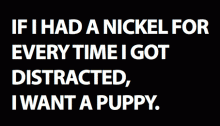Tag: brand
-
Can half a second on your website determine the trust of your brand?
Our guts are pretty good indicators of trust. In fact, humans are hardwired to read a situation and come up with an impression in just 50 milliseconds. We get this “fight or flight” ability from our ancestors. While not everything is a death threat, we use this ability without much thought to it. So let’s…
-
How do you write a brand statement?
We were working on doing a brand statement for a company when a colleague Scott passed along some good information he received from an expert in the field. Start with: To (target audience), (your company) is the (blank) provider/service of (blank) delivered through (blank). This helped us a ton to put together several brand statements.
-
Branded for Life – Is branding more than a logo?
Funny little story about branding. I’m branded. I have a classic heart tattoo with my wife’s name on my right arm. It’s cliche but I love it. One day a buddy of mine asked what would happen if we would get a divorce. “I can’t believe you put her name there. That’s just stupid.” Obviously,…
-
How do you write a brand statement?
We were working on doing a brand statement for a company when a colleague Scott passed along some good information he received from an expert in the field. Start with: To (target audience), (your company) is the (blank) provider/service of (blank) delivered through (blank). This helped us a ton to put together several brand statements.
